“How do I come up with a unique value proposition? What I sell isn’t unique.”
If you’re working on improving your business, you know there’s no shortage of information about why you need a unique value proposition.
You’ve probably even seen a handful of solid examples, but when you go to write your own, you hit a wall.
You’ve got too many competitors, they’re selling the same stuff, and it looks like all the good value propositions are taken.
What can you do? What should you differentiation strategy be?
In this article, let’s explore the process and mindset necessary to create a killer value proposition when you’re in a crowded market.
By the time we’re done, you’ll know:
- How to examine the competition;
- The reasons why people buy online;
- How to turn shoppers’ motivations into a unique value proposition that sells.
This article is a companion piece to another article: “How to Create a Unique Value Proposition (with Examples).” As such, if value propositions are new to you, open that article in another tab and read it after you’re done here.
Table of contents
Not being alone isn’t a bad thing.
According to the business development firm Ernst & Young, the top four categories for online purchases are:
- Computer Related Products (40%);
- Books (20%);
- Travel Industry (16%);
- Clothing (10%).
If you sell in any of those categories, I don’t need to tell you how crowded they are. However, that’s not a bad thing. Potential customers have established buying patterns in those markets, so some friction has already been removed.
Not to mention that many of your competitors have no idea what they’re doing. Plenty of decisions are made by CEOs and other HiPPOs who aren’t looking at any research or data.
Plus, more competition means more competitive data. More competitive data means better analysis. Better analysis means more ways to tear the competition apart.
You can’t be unique unless you know what the competition is doing.
The purpose of competitive analysis isn’t to copy a bunch of stuff that you think is working. Instead, it’s your chance to figure out where competitors are weak—and where you may have an advantage.
A SWOT Analysis of you and your direct competitors is a quick way to do this. (If you’ve never heard of SWOT, here are some SWOT analyses of popular brands.)
Think this doesn’t matter? Nivea for Men—a skincare product in a saturated market—gives us this excellent case study for a SWOT analysis. That analysis was essential to a strategy that expanded their market and grew international revenues by 20%.
Nivea used their market research to establish themselves as the best in men’s skincare. They even won the consumer-voted FHM award for best men’s skincare product line.
Where does your value proposition come from?
Your value proposition should come from what you do better than the competition, not from forcing copywriters to be clever.
Look at the weaknesses of your competitors and ask:
- Is your website easier to use?
- Can your product be better tailored to the market?
- Do you have a kick-ass customer service team?
- Is your return policy or customer guarantee superior?
- Are your prices lower?
- Do you have faster shipping options?
- Is your atmosphere better?
Realistically, there will be problems you can’t solve. For example, if you can’t offer free shipping—and the competition can—that’s not going to help your value proposition.
But being more knowledgeable, having a friendlier staff, or a cooler inventory are things you could work into a unique value proposition.
If your value proposition makes the benefit immediately apparent to the customer, you’ll be a step ahead because everyone else is still trying to compete on features.
You are not the products you sell.
HelpScout offers up this great example of a unique selling proposition for an auto-repair shop (another typically crowded market), which led to a 58% increase in conversions for the advertiser.
As Gregory Ciotti explains:
The first value proposition just doesn’t drill down enough on what the customer is getting—the addition of “just one hour” to the second statement adds a very specific benefit to justify why the customer should buy from them.
More importantly, this value proposition establishes the garage as the “just one hour” guys. “Speed of service” is what they’re selling.
Similarly, Domino’s never claimed to be “The Best Pizza You’ve Ever Tasted.” Instead, they understood that when someone wants pizza, they want it now. They built their business on “You get fresh, hot pizza, delivered to you in under 30 minutes—or it’s free!”
Shoe retailer 6pm.com isn’t selling shoes and clothing—they’re selling high fashion at deep discounts:
The point is, in crowded markets, you’re not really selling the product, you’re selling the customer experience.
What experience are you really selling?
In this infographic by Invesp (which sources data from eMarketer and Internetretailer.com), you can see the top seven reasons people buy online. In order, they are:
- Low prices (38%);
- Shopping convenience (35.1%);
- Easy to compare (33.1%);
- Free shipping (31.5%);
- Time saving (30.8%);
- Easy to buy (29.2%);
- Range of products (17.4%).
Don’t take these motivations at face value, though. Not everything is as it seems. Some of these reasons can be overridden by something else; others can be “hacked.” So pay attention. This is where we might find your unique value proposition.
Low prices
Nobody wants to race to the bottom on price. If it’s something you can do while protecting your profits—and you’re confident you can make up for it in volume—by all means, do it.
But if you’re like the rest of us, you’re not jumping at the thought.
Instead of boasting “the lowest prices,” tap into the low-price mindset by offering to match the lowest advertised price from a direct competitor in your value proposition.
“The best prices on 4K televisions. Find a better price from a competitor* and we’ll beat it—guaranteed.”
Alternatively, your value proposition could highlight superior customer service:
A survey by Forrester asked 4,600 U.S. consumers across 12 industries which was more important, “great customer service” or “low prices.” Customer service won across the board.
Shopping convenience
Shoppers order when and where it’s most convenient. Traditionally, convenience could mean having great recommendations or an easy-to-navigate website with fast load times.
While those things absolutely matter, the killer value proposition for shopping convenience may be emphasizing that your store is convenient to access—no matter where your customer is located (or which device they’re using).
Technologies like progressive web apps can create a lightning-fast user experience without the need for app adoption.
Easy to compare
People comparison shop, there’s no way around it. The average consumer will visit three websites before making a purchase and will likely spend more money with sites they visit frequently.
Honestly, making things easy to compare probably won’t be your leading value proposition (unless you’re in the insurance or accommodations industry—maybe.)

But if you’re competing on price or better product features, it couldn’t hurt to add some comparison shopping functionality as a bonus to back your claim.
There are some really excellent examples over here. My favorite is SugarSync:
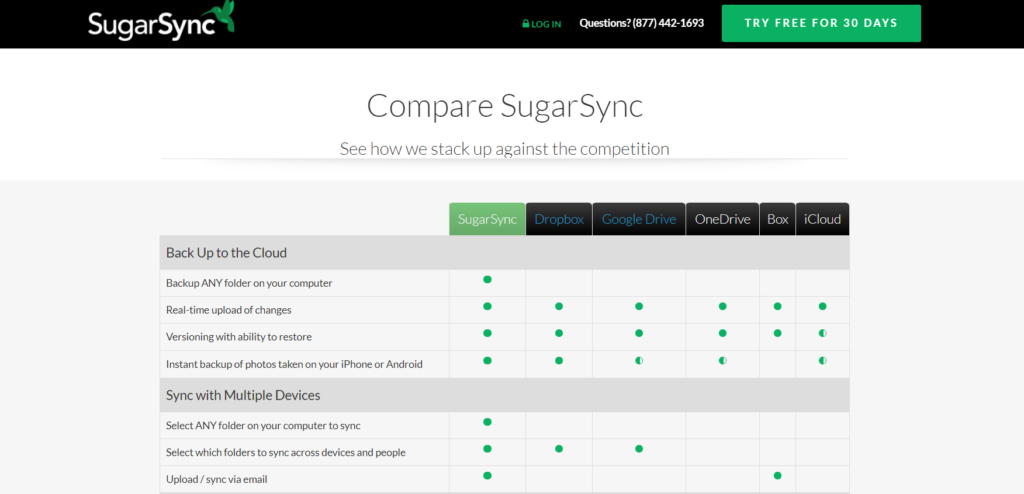
Again, it’s unlikely that comparison shopping will be your main value proposition, but if the market is overcrowded, it could be a great way to reinforce whatever claims you do make in your value prop.
Free shipping
For whatever reason, a free shipping offer that saves a customer $6.99 is more appealing to many than a discount that cuts the purchase price by $10.
David Bell, Wharton
Free shipping is another one that won’t likely be your primary value proposition (unless no other competitor offers it) but rather as a bonus to supplement the main proposition.
Free shipping matters. Some 47% of people will abandon a shopping cart if free shipping isn’t available.
There are a number of ways you can offer free shipping:
- All free, all the time;
- Free during specific holidays;
- Free over a certain dollar amount, etc.
Or, you can create a model that eventually puts you in the position to offer free shipping all the time.
Big Commerce says this about including free shipping as part of your offer :
Free shipping [. . .] can help increase your average order value by up to 30% in just a few short months. You simply need to work out your average order value and average shipping cost, and then offer free shipping on your average order value + 10%, or whichever amount covers your average shipping cost and provides enough of a profit to slightly increase your average order value.
Time saving/Easy to buy
We want ways to get our products faster. There are two ways I can think of this in modern ecommerce.
1. Subscription services

Amazon introduced a “Subscribe & Save” program to help customers “Save up to 15% on auto-deliveries.“
Another favorite, Dollar Shave Club, has taken the headache out of buying (or rather, never really replacing) your razor.
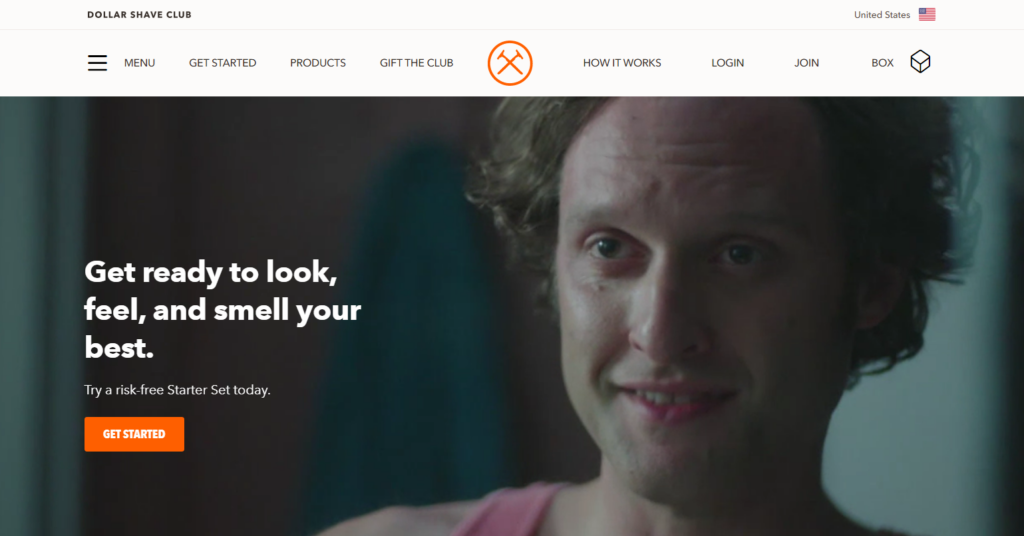
What I like about these services is that their value propositions are basically selling the idea that you don’t have to shop for stupid, but necessary, things.
With a little creativity, a subscription service could be adapted to many kinds of ecommerce models, saving customers time and making it much easier to buy.
2. Product recommendation engines
This case study on 4Tell.com talks about how SmartPak Canine earned a 36% increase in revenue by implementing a product recommendation system.
If their value proposition were focused on their recommendation system, it might read something like, “Give us 10 seconds, and we’ll recommend the best supplements based on your dog’s breed, age, and size.”
Range of products
No way around it: Selection matters. You should have enough inventory to satisfy your customers’ demands.
Now, “range of products” doesn’t mean you have to carry every product under the sun. If you’re a fashion e-tailor that carried only 20–30 styles, that’d be fine if you carried the product I was looking for in my size.
Trader Joe’s carry’s less than 1/10 the selection of other grocery stores but averages twice the revenue per square foot of direct competitor Whole Foods. How?
They carry only what customers want. They watch the trends and listen closely to their target market. They may not have 40 kinds of peanut butter, but their entire range of products is far more appealing to their target buyer.
How do I know if my value proposition is any good?
After you’ve done the competitive analysis and figured out your angle, all that’s left is to write your value proposition.
You can test your value proposition by running Facebook or Google Ads targeting competitor traffic, then sending those users to a landing page where the value proposition sits front and center.
Lean Startup Machine used this method to validate a startup idea and value proposition—and got 50 signups within the first two hours of the page going live.
If you’re hesitant to go live without internal testing, use this copywriting evaluation process to fine tune your value proposition before spending money or segmenting traffic.
Conclusion
I know how daunting and vulnerable putting a new value proposition in a crowded market feels.
You’ve put a lot of work into figuring out the competition and how you can out do them. There’s a chance you could fail, and it’s terrifying to think all that effort was for nothing.
But the truth is, while everyone else is out there copying image styles or site structure, you’re taking notes on the things they take for granted. You’ll come out of nowhere, and not a single one of them will know what to do.
So be brave, test your idea. If it doesn’t work, learn from what you did and try again. Don’t get precious about it. They’re just words.


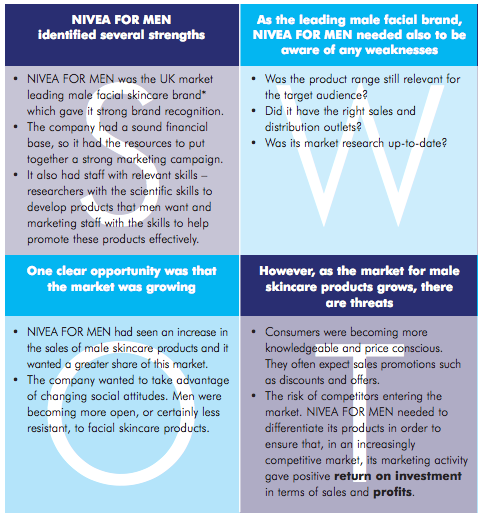




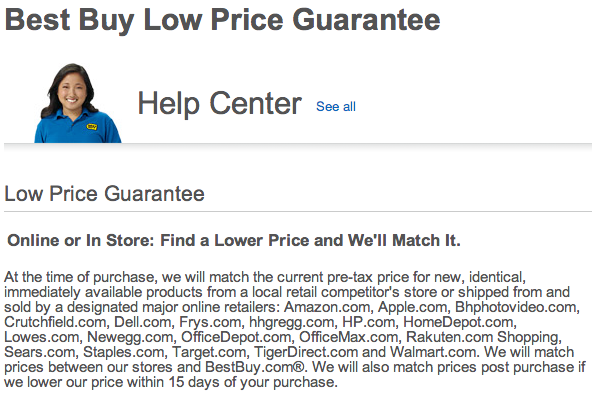
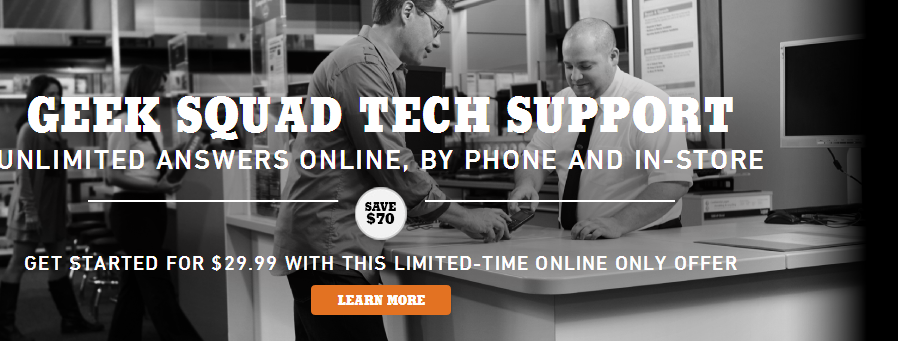
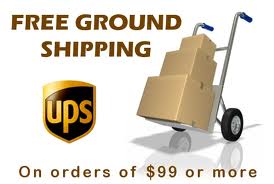




Great blog post Tommy. I know you are in online marketing, so you know how difficult it can be as much as anyone. I’ve actually heard, “Oh – you’re one of those” when telling people I did SEO, and so I knew a change was needed LOL.
Haha. When I’m at a cocktail party and people ask me “so what do you do?” – I used to reply “conversion optimization”, and they just rolled their eyes. Now I say “I sell money”, and they’re instantly intrigued.
“I sell money”. Brilliant.
Lol! yep.
When I was just doing SEO I started saying things like “I make businesses #1 on Google.” (terrible value prop) or “I put businesses in front of the people actively searching for what they sell.” (a little better)
It would be interesting to see how that value proposition would have evolved as the product offering became more specific.
Something like “Know where Google thinks you should rank in 24 Hours – Guaranteed” then offer a brief SEO audit – or something like that.
Great post, Tommy! Very thorough and I learned a lot. Thanks.
Great article! So much more thorough than what you see on most blogs, and yet still written in a totally accessible way.
Despite being a marketer for over 30 years, I still find that it is sometimes difficult to come up with a good USP for myself (but generally much easier for my clients!)
Cheers!
If you think you can, your right. If you think you can’t, your right. It’s a matter of the mindset. This was good article. I really liked the disclaimer and “companion” article. This was a first time thing to me.
I thought David Ogilvy covered this way back in the day, in *Confessions of an Advertising Man.* He related how Ogilvy and Mather had the Ivory Soap account. Soap is soap, right? So, he came up with: Ivory Soap. So pure it floats. And it worked. But, when you really think about it, who cares that it floats? I mean, WTH? But that set it apart, and consumers were convinced that floating soap was somehow a Good Thing. LOL.
Of course, customers are a lot more cynical these days. If you told ’em it floats, they probably *would* say, “So what?”
You’ve got a good point, but you’re focusing on the wrong side of that sentence for value proposition.
The value proposition here isn’t – Soap that “floats” – it’s “Soap so pure”
Think about who Ivory is marketed to. Looking at their Facebook page now, I see a smiling mom with her two kids and (I’m guessing) her husband.
http://ivory.com
In fact, their tagline now is “keep it pure, clean & simple” so the purity value proposition is still holding on after what? 40 years of Ogilvy’s original value proposition.
The floating part of the value proposition you mentioned is more novelty than anything else, that extra “hook” that gets it to stand out in the customers mind (Ogilvy was an ad man after all) but the real selling point is “Purity” which is very important to their target demographic.
Thanks for bringing that up!
Great Post Tommy with compelling rationale. I like all of the examples you gave and therefore shared on my Linkedin wall. I am a fan of great quality posts like yours, so please keep up sharing!
Thanks so much for sharing Stefanie :-) Might I be able to connect with you on linkedin?
This is a very helpful article. Selling something that isn’t unique is a difficult task, maybe even a burden… But if you come up with a good value proposition I think it gets easier. Thank you for great tips.
No problem :-) Though, I would think if what you’re selling is a burden, shouldn’t you try selling something else?
Hey Peep, thanks for the post jam-packed with fantastic ideas! Also appreciate the 4-Tell shout-out. Although, our engineers flinched just a little when they heard “give us 10 seconds and we’ll recommend the best…”
In reality, we’d be out of business if we took that long – what shopper waits more than 3 seconds for a page to load before they give up and hit a competitor’s site? (In retail, the competition literally is only a click away!) It’s more like .1 second for our recommendations. …and usually the entire page loads slower than we do. :)
Sorry about that! (Don’t think I’m weird for answering, I wrote the article ;-)
Well, please, feel free to test that value prop :-) I’d love to see if it works for you.
Have you considered partnering with a dedicated hosting company like Wp-Engine? Might be interesting to work faster hosting into your product offering.
Pro Tip: You read the book, positioning the battle for your mind. Every brand can establish a unique position for themselves, you just need to find the opening in the marketplace and play to that niche.
Hey thanks for the tip!
Hey Tommy,
Excellent piece on this topic. The impact of creating (and testing) a strong value prop can’t be overstated — it’s one of the most critical optimization opportunities, yet most organizations are still way off the mark.
This post and the companion post from Peep are an awesome starting point (and thanks for those props/links to my MEx post on this topic — cool to stumble on to those).
One thing I’d add is this isn’t a one-and-done process. It needs to be part of an annual review or sales/marketing audit, because these can get outdated fast, especially in very competitive markets. Nailing this is so important it should be the core of any company’s annual retreat or leadership offsite.
Looking forward to more kick-ass posts!
Cheers — Hunter
Thank you for such a deep analysis – it added a couple of thinks to check and analyse to my marketing plan. The most interesting thing is that though all marketing methods are known, they are targeted to ecommerce here and it helps those who are just starting new online business or evaluating the idea
Another Oscar winning post.